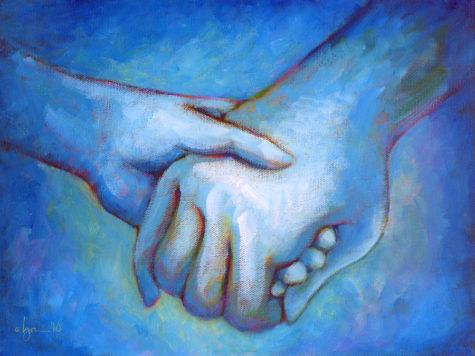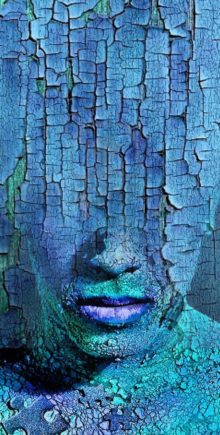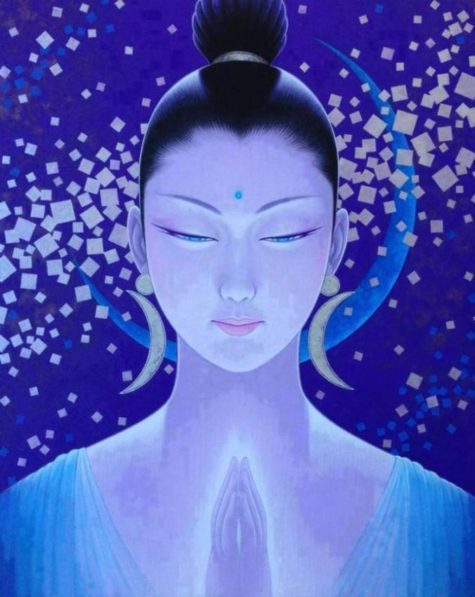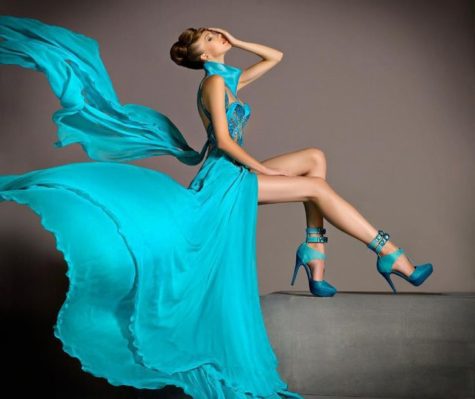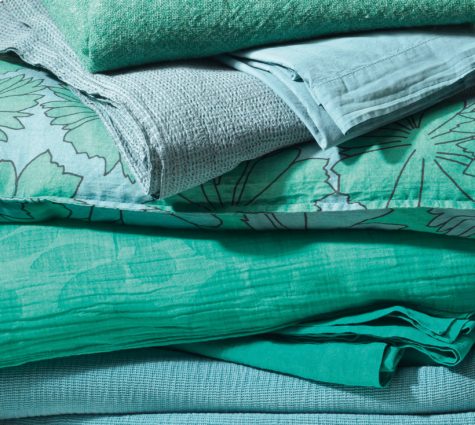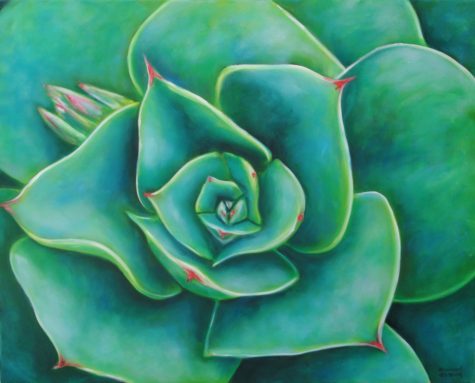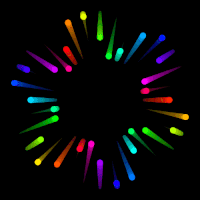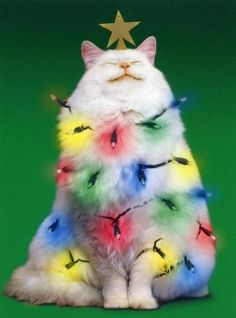Calm
Color Me What?
Color Therapy is an alternative style of therapeutic practice that utilizes the vibration and frequency of color to aid in healing. Are you in pain, feeling anxious, or fearful? Here is an exercise to help establish the color therapy protocol you need TODAY:
Sit with your eyes closed and visualize your situation.
Think of a color that soothes what you are feeling. Don’t worry if it takes a couple different examples, it is important to listen to your body and discover what works best for you. What is today’s color?
Take a deep breath and imagine pulling this color throughout your body. When you exhale, imagine the (anxiety, pain, fear, anger) leaving your body. Do this a few times until you to feel a shift in your body and begin to feel better.
Imagine a glass filled with liquid in your chosen color and drinking it down. That color is filling up your body…you begin to feel (calm, safe, happy, and any pain minimizing).
Continue visualizing your chosen color for 3 – 5 minutes. Thank this color and carry its energy with you for the rest of the day.
Remember any color’s energy is available to you whenever it is needed.
From: Balanced Women’s Blog
More About Blue
The color blue is one of trust, honesty and loyalty. It is sincere, reserved and quiet, and doesn’t like to make a fuss or draw attention. Blue hates confrontation, and likes to do things in its own way.
Key words and associations:
- Blue represents both the sky and the sea, and is associated with open spaces, freedom, intuition, imagination, expansiveness, inspiration, and sensitivity.
- Blue also represents meanings of depth, trust, loyalty, sincerity, wisdom, confidence, stability, faith, heaven, and intelligence.
- Basic meanings are truth, communication, peace, calm, spiritually attuned.
From a color psychology perspective, blue is reliable and responsible. This color exhibits an inner security and confidence. You can rely on it to take control and do the right thing in difficult times. Blue has a need for order and direction in its life, including its living and work spaces.
Blue seeks peace and tranquility above everything else, promoting both physical and mental relaxation. The color blue reduces stress, creating a sense of calmness, relaxation and order – we certainly feel a sense of calm if we lie on our backs and look into a bright blue cloudless sky. It slows the metabolism. The paler the blue the more freedom we feel. In the meaning of colors, blue relates to one-to-one communication, especially communication using the voice – speaking the truth through verbal self-expression – it is the teacher, the public speaker.
The color blue is idealistic, enhancing self-expression and our ability to communicate our needs and wants. It inspires higher ideals.
Blue’s wisdom comes from its higher level of intelligence, a spiritual perspective.
Blue is the color of the spirit, devotion and religious study. It enhances contemplation and prayer. On the other hand, blue’s devotion can be to any cause or concept it believes in, including devotion to family or work.
Blue is the helper, the rescuer, the friend in need. Blue’s success is defined by the quality and quantity of its relationships. It is a giver, not a taker. It likes to build strong trusting relationships and becomes deeply hurt if that trust is betrayed.
Blue is conservative and predictable, a safe and non-threatening color, and the most universally liked color of all, probably because it is safe and non-threatening. At the same time blue is persistent and determined to succeed in whichever endeavors it pursues.
Change is difficult for blue. It is inflexible and when faced with a new or different idea, it considers it, analyzes it, thinks it over slowly and then tries to make it fit its own acceptable version of reality.
Blue is nostalgic. It is a color that lives in the past, relating everything in the present and the future to experiences in the past.
Blue establishes calm. It’s the color of the sky and ocean and therefore gives a sense of vastness, as in “the wide blue yonder.”
Blue, the color of the ocean and sky is generally associated with many positive things. Symbols such as trust, loyalty and wisdom are all psychologically associated with blue and other symbols such as faith and heaven are included in this association. Light blue is associated with health, healing, tranquility and softness. Dark blue represents knowledge, power, integrity and seriousness and can be said to be a more depressing color than lighter shades of blue.
Positive and Negative Traits of Blue
Too much blue can create feelings of melancholy, negativity, sadness, self-righteousness, and self-centeredness. Too little blue brings about qualities of suspicion, depression, stubbornness, timidity, and unreliability. Avoid blue in cases of depression or when needing to feel more social.
Positive keywords include:
Loyalty, trust and integrity, tactful, reliability and responsibility, conservatism and perseverance, caring and concern, idealistic and orderly, authority, devotion and contemplation, peaceful and calm.
Negative keywords include:
Being rigid, deceitful and spiteful, self-righteous, superstitious and emotionally unstable, too conservative, predictable and weak, unforgiving, and frigid. It can also indicate manipulation, unfaithfulness and untrustworthiness.
Blue Represents
Blue can be strong and steadfast or light and friendly. Blue is used to symbolize piety and sincerity in heraldry. The color blue in many cultures is significant in religious beliefs, brings peace, or is believed to keep the bad spirits away. In Iran, blue is the color of mourning while in the West the something blue bridal tradition represents love.
- Communication: Blue relates to one-to-one verbal communication and self expression.
- Peace and calm: The color blue induces calm and peace within us, particularly the deeper shades.
- Honesty: Blue is the color of truth.
- Authority: The darker the color blue, the more authority it has.
- Religion: Blue is the color of devotion and religious study.
- Wisdom: Blue enhances the wisdom of the intellect.
The blue color communicates significance, importance, and confidence without creating somber or sinister feelings. This is where the corporate blue power suit and the blue uniforms of police officers and firefighter came from. Considered a highly corporate color, blue is often associated with intelligence, stability, unity, and conservatism.
Effects of Blue
- Conservative: The color blue is a safe color – the most universally liked color of all.
- Predictable: Blue is not impulsive or spontaneous and it doesn’t like to be rushed – blue needs to analyze and think things through, and to work to a plan.
- Orderly: Blue needs to have direction & order- untidiness and unpredictability overwhelms it.
- Rigid: Blue likes familiarity. It doesn’t like change and will stubbornly do things its own way, even if there is a better way.
The color blue has positive affects on the mind and the body. As the color of the spirit, it invokes rest and can cause the body to produce chemicals that are calming and exude feelings of tranquility. Blue helps to slow human metabolism, is cooling in nature, and helps with balance and self-expression. Blue is also an appetite suppressant.
However not all blues are serene and sedate. Electric or brilliant blues become dynamic and dramatic, an engaging color that expresses exhilaration. Also, some shades of blue or the use of too much blue may come across as cold or uncaring, and can dampen spirits.
Shades of Blue
Different shades, tints, and hues of blue have different meanings. For example, dark blue can be seen as elegant, rich, sophisticated, intelligent, and old-fashioned, royal blue can represent superiority, and light blue can mean honesty and trustworthiness.
Note: This post was compiled by Shirley Twofeathers for Color Therapy, you may repost and share without karmic repercussions, but only if you give me credit and a link back to this website. Blessed be.
Healing With The Color Blue
Whenever I feel blue, I start breathing again.
~L. Frank Baum
Overview:
Dr. Edwin Babbitt, in his classic, “The Principles of Light and Color,” states that “The Blue Ray is one of the greatest antiseptics in the world.”
Blue is an all purpose healing color and a great antiseptic and astringent, it discourages disease and disharmony, calms the mind and nerves. Cooling, calming, and protecting, it relaxes the nervous system, helps reduce fever, inflammation and bleeding.
Blue is associated metaphysically with the throat and thyroid gland. Blue-colored light has been shown to reduce blood pressure. Blue calms the autonomic nervous system and is anti-inflammatory. Dark blue affects the pituitary gland, the regulator of sleep. Dark blue also reduces pain and strengthens the skeleton by keeping bone marrow healthy.
Light and sky blues are those most often used in healing work. Blue is good for soothing body, mind and spirit, highly recommended in case of shock. It is very good for treating burns, chickenpox and mumps. In moderation, blue is excellent for emotional healing of stress and anxiety (too much can increase depression and apathy in those so inclined),
The color blue also helps reduce and manage “hot” emotions like anger, impatience, greed or jealousy.
Healing with the color blue:
- Blue is cooling, electric, astringent.
- Good for emotional healing.
- Use a blue light for measles, chickenpox and mumps.
- It can help with self control and in chaotic situations.
- Highly recommended in case of shock.
- Cools down inflammations, fevers, and high blood pressure.
- Stops bleeding.
- Relieves the headaches.
- Calms the mind and nerves.
- Calms strong emotions like anger, aggression or hysteria.
- Brings tranquility.
- Great for insomnia.
- Enhances antiseptic effects
- It is used for stings, itches, rashes and bites.
- Soothing to the eyes.
- Anti-itching.
- Anti-irritation (for instance redness of the skin).
- Anti-stress.
- Soothes suffering.
- It is good for cooling, calming, reconstructing and protecting.
- A great antiseptic and astringent.
- It is very good for treating burns.
- Cooling, calming and protecting.
- It relaxes the nervous system.
- Helps reduce fever, inflammation and bleeding.
- Blue can be used for any type of ailment associated with speech, communication, or the throat.
- Excellent for laryngitis or inflammation of the larynx.
- Also can be used for tooth problems and associated pain and inflammation.
Contra-Indications
- Blue can increase depression, tiredness and sorrow, so its use should be observed carefully and darker shades should be used only moderately.
Note: This post was compiled by Shirley Twofeathers for Color Therapy, you may repost and share without karmic repercussions, but only if you give me credit and a link back to this website. Blessed be.
Using Turquoise
Turquoise helps to open the lines of communication between the heart and the spoken word. It presents as a friendly and happy color enjoying life.
In color psychology, the color turquoise controls and heals the emotions creating emotional balance and stability. In the process it can appear to be on an emotional roller coaster, up and down, until it balances itself.A combination of blue and a small amount of yellow, turquoise fits in on the color scalebetween green and blue. It radiates the peace, calm and tranquility of blue and the balance and growth of green with the uplifting energy of yellow.
Turquoise recharges our spirits during times of mental stress and tiredness, alleviating feelings of loneliness. You only have to focus on the color turquoise, whether on a wall or clothing and you feel instant calm and gentle invigoration, ready to face the world again!
Turquoise is a great color to have around you, particularly in an emergency, as it helps with clear thinking and decision-making. It assists in the development of organizational and management skills. It influences rather than preaching and demanding.
The color turquoise is a good color to aid concentration and clarity of thought for public speakers as it calms the nervous system, gives control over speech and expression, and builds confidence. Print your speech notes on turquoise and every time you glance down you will feel the effects of the color.
Turquoise heightens levels of creativity and sensitivity. It is good at multi-tasking, becoming bored if forced to focus on one thing only. Sometimes its thinking can become scattered if surrounded by too much of this balancing color.
Turquoise encourages inner healing through its ability to enhance empathy and caring. It heightens our intuitive ability and opens the door to spiritual growth. It is the color of the evolved soul. Many meditations can begin with visualizing a pool of Turquoise water to gaze in or even to imagine diving into to receive messages from Dolphin and the Ocean Spirits.
Turquoise can also be self-centered, tuning in to its own needs above all others. At the same time, it can help us to build our self-esteem and to love ourselves, which in turn supports our ability to love others unconditionally. At its most extreme it can be boastful and narcissistic.
Although turquoise is self-sufficient, it fears being alone and can become aloof and unapproachable when this occurs, making the situation worse.
Turquoise has strong powers of observation and perception and can be quite discriminating. It has the ability to identify the way forward, the way to success, balancing the pros and cons, the right and wrong, of any situation. It is a good color to use when you are stuck in a rut and don’t know which way to move.
Turquoise can sometimes be impractical and idealistic and remote from emotional reactions, appearing excessively cool, calm and collected.
Positive and Negative Traits of Turquoise:
- Positive keywords include communication, clarity of thought, balance and harmony, idealism, calmness, creativity, compassion, healing and self-sufficiency.
- Negative keywords include boastfulness, secrecy, unreliability and reticence, fence-sitting, aloofness, deception and off-handedness.
Loving turquoise:
If this is your favorite color, you are friendly and approachable, easy to communicate with. You are compassionate, empathetic and caring. You have a heightened sense of creativity and sensitivity. You speak from the heart and love sharing your inner most thoughts.
Not loving turquoise:
A person who has an aversion to turquoise may be looking for solidity and security in society, especially in marriage. Also, may be reluctant to think originally or to walk new paths.
Wearing turquoise:
Tints of turquoise color have a sweet feminine feel. Darker shades of turquoise, such as teal have a more sophisticated feel. Variations of turquoise, are often used to represent water. This color is also is referred to as aqua and aquamarine. Wear turquoise jewelry to give yourself confidence and strength.
The Color Turquoise Represents
Communication:
Turquoise represents open communication from and between the heart and the spoken word. It relates to the electronic age and the world of computers, and communication on a large scale.
Emotional Control:
Being the mid color between the extremes of red and violet, turquoise is the color of balance, for the emotions, thoughts and speech.
Self-Sufficiency:
Turquoise has the ability to tune into its own needs and find the way to success.
Effects of the Color Turquoise
Clarity of Thought:
Turquoise enhances the ability to focus and concentrate, assisting with clear thinking and decision-making, and the development of good organizational skills.
Calming:
Turquoise is calming yet invigorating, restoring depleted energies.
Non-emotional:
A negative effect of turquoise is that it can cause people to be too aloof and to hide their emotional reactions.
Healing With The Color Turquoise
In healing Turquoise can help to calm hyperactive or hypersensitive people . Turquoise calms the mind and is cooling to the nervous system. assists immunity and is one of the colors for throat chakra. It is a powerful cleanser and can be used as an all purpose higher octave color for healing. It can be used to improve the circulation and healing effect of energy in general.
Healing with the color turquoise:
- Turquoise is important for respiratory system and in strengthening the metabolism.
- It is cooling to the system, and can be beneficial in easing all feverish conditions and for balancing all systems of the body. It can also be used to cool and ease any inflammation.
- Combines both the beneficial effects of blue and green.
- It vitalizes all systems. It is also purifying.
- In treating febrile diseases, change to turquoise when the temperature is normal.
- Turquoise is useful in treating skin conditions, throat problems, and it is very effective for acute pain and earaches.
- Turquoise is a prime skin-building color and should be used after the pain from burns is relieved. Turquoise hastens the formation of new skin.
- It eases respiration problems. It is effective in treatment of asthma and bronchitis, especially with children. Regular color breathing with turquoise or aqua can prevent intense attacks of asthmatic conditions.
- Turquoise is good for immune system, skin (burns and infections), mental relaxation, acidic, tonifier, regulates lung/large intestine systems.
- Turquoise stimulates the Thymus center, or Higher Heart Chakra.
- Increases intuition and sensitivity.
- Turquoise is a cerebral depressant for over-active mental patients.
- It enhances the ability to focus and concentrate, assisting with clear thinking and decision-making, and the development of good organizational skills.
- Works as a disinfectant and antiseptic.
- Tones the general system.
- Relaxes sensations of stress.
- It is calming yet invigorating, restoring depleted energies.
- It resonates to the thymus and thyroid glands of our endocrine system.
- Turquoise has a strengthening influence on all systems of the body bringing a sense of inner confidence.
- Treats disillusionment and apathy
- Also good for communication issues, cleansing , breath issues, physical detox , rebirthing , purification , sterilization , transition , pain, and hearing.
Turquoise imbalance:
- Too much of this color in your life may give you an overactive mind and create emotional imbalance, making you either over-emotional or non-emotional.
- Too little turquoise in your life may cause you to withhold your emotions, resulting in secrecy and confusion about your direction in life.
Note: This post was compiled by Shirley Twofeathers for Color Therapy, you may repost and share without karmic repercussions, but only if you give me credit and a link back to this website. Bright Blessings.
The Color Turquoise
“She would be half a planet away, floating in a turquoise sea,
dancing by moonlight to flamenco guitar.”
― Janet Fitch, White Oleander
Turquoise is a blend of green and blue. It is so named because the Turks were fond of the color and decorated many of their buildings with turquoise ceramic glazed tiles.
Turquoise has the calming, expansive nature of green and the cool, quiet flow of blue. It can bring to mind a particular quality in the sky before or after sunset, a calm, warm sea, a beautiful lagoon, a pure mountain stream or distant hills in the mellow light of late summer
Turquoise is the color of the deep subconscious. Since the lungs vibrate in the green range, turquoise also belongs to the lungs, especially to the higher vibration of the lungs, which is spirituality, creativity, intuition, imagination, and the synchronistic quality of bring “in tune” with nature, with oneself, with “the flow.” The process of psychic opening is assisted with the color turquoise, as well as violet, and wearing turquoise around the neck is good for the voice, expression, creativity, since the root urge of creativity is to express.
This is a color that recharges our spirits during times of mental stress and tiredness, alleviating feelings of loneliness. You only have to focus on the color turquoise, whether on a wall or clothing and you feel instant calm and gentle invigoration, ready to face the world again!
It is a great color to have around you, particularly in an emergency, as it helps with clear thinking and decision-making. It assists in the development of organizational and management skills. It influences rather than preaching and demanding.
This is a good color to aid concentration and clarity of thought for public speakers as it calms the nervous system, gives control over speech and expression, and builds confidence. Print your speech notes on turquoise and every time you glance down you will feel the effects of the color.
It heightens levels of creativity and sensitivity; it is good at multi-tasking, becoming bored if forced to focus on one thing only. Sometimes thinking can become scattered if surrounded by too much of this balancing color.
Turquoise’s essence is clear, fresh, focused, youthful, imaginative, transformational, clean, sensitive, changing, rarefied, new, and victorious. Turquoise encourages inner healing through its ability to enhance empathy and caring. It heightens our intuitive ability and opens the door to spiritual growth. It is the color of the evolved soul. Turquoise encourages clarity in thoughts, feelings, and communication.
Note: This post was compiled by Shirley Twofeathers for Color Therapy, you may repost and share without karmic repercussions, but only if you give me credit and a link back to this website. Bright Blessings.
Holiday Happiness
Many people enjoy relaxing by the seaside in summer. The predominant colors are the blues of the sea and sky, which introduce a feeling of expansiveness and peace. Turquoise tempers the deeper blues with an extra sense of calm and comfort. The golden yellow of sand and sunlight energize the body’s systems, helping to restore balanced functioning by reducing anxiety and stress levels, and, creating happiness and clarity in the mind. It is no wonder with today’s hectic lifestyle that two weeks doing nothing and simply being on a beach in the sunshine is regarded by many as the perfect holiday and one which they will repeat each year with unfailing regularity.
The same color combination of blues and golds occurs in many desert or near desert conditions and it is perhaps significant that in the past many people have sought the deserts of the world as places of mysticism for contemplation, visions, and religious inspiration. With such isolation, very few distractions and the stimulus of blues gold, and yellows, directly affecting the function of the nervous system, such places encourage the deepest thought.
Source: Healing With Crystals and Chakra Energies


